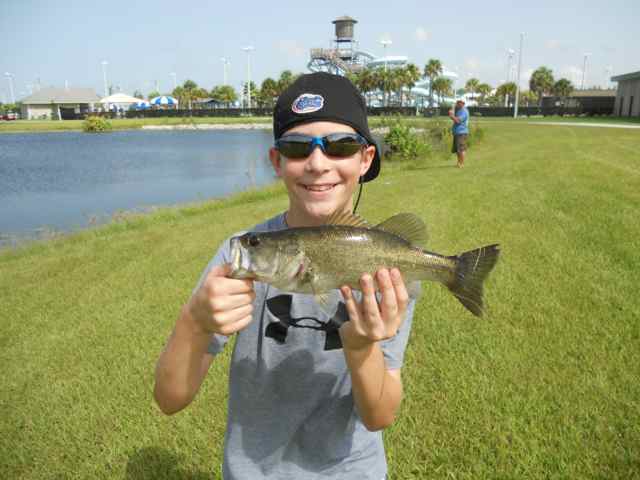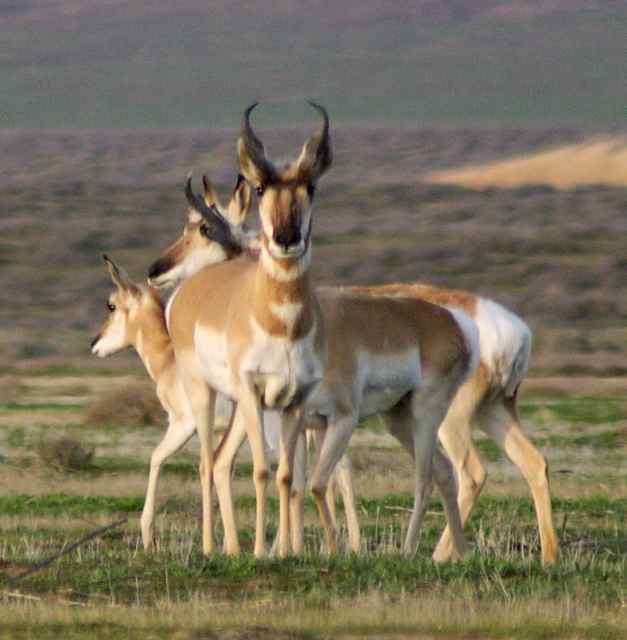SIGNIFICANT CHANGES TO WYOMING'S GREEN RIVER DRAINAGE BURBOT REGULATIONS IN 2014

by Wyoming Game & Fish
12-3-2013
307-777-4600
Website
GREEN RIVER--There will be significant changes to the burbot regulations in the 2014-2015 Wyoming Fishing Regulations beginning January 1, 2014. Wyoming Game and Fish Department personnel want anglers to be aware of the new regulations so they aren't surprised on their next angling trip.
In early 2013, the Wyoming Legislature, working with the Game and Fish, passed a bill that granted the Wyoming Game and Fish Commission the authority to designate, through rule and regulation, specific species of game fish, in specific waters, as non-game fish.
"Reclassifying a game fish to a non-game fish means that game fish rules and regulations no longer apply," said Green River Fisheries Supervisor Robert Keith. "This allows biologists to continue to promote the burbot fishery in the Green River drainage, without concerns regarding waste of game fish and methyl mercury levels in burbot flesh. This is a major step forward in the fight to suppress burbot populations in the Green River drainage and minimize impacts to drainage wide sport fisheries."
Beginning in January 1, 2014, burbot in the Green River drainage, west of the Continental Divide, will be reclassified as a non-game fish, meaning anglers will be able to kill and legally dispose of the burbot they catch, but do not intend to eat. Also, beginning January 1 the department will reinstate the "must kill" regulation for the burbot in the Green River drainage. Reclassifying illegally introduced game fish as nongame is a substantial change to the way the department manages Wyoming fisheries.
Burbot were illegally introduced in the Green River and have become a widespread problem. Illegally introduced game fish have significant negative and long lasting impacts on desirable game fish populations. Burbot are aggressive predators that exploit existing game fish populations, reducing their numbers and increase management costs.
"Just remember, elsewhere in the state burbot are a native game fish afforded all the protections of game regulations," Keith said. "In fact, fisheries biologists east of the Continental Divide are concerned about the native burbot populations and have implemented restrictive limits. Please review current fishing regulations for details."
Despite their non-game status in the Green River drainage, burbot should still be killed quickly and humanely. Those burbot not destined for the table must be disposed of properly and discretely. Leaving fish on the ice, the bank, or next to a road is not proper disposal and will result in a littering citation.
"Green River drainage anglers have three options for dealing with their unwanted burbot catch," Keith said. "Burbot are great to eat, just follow the Wyoming Department of Health (WDH) fish consumption advisory (more on this below). Or, dispose of burbot in your trash at home or at your local landfill. Finally, sink unwanted burbot in deep water near where you caught them; prior to sinking the fish, cut open their bellies to insure the air bladder is punctured. This returns the nutrients to the water body."
Anglers should be aware that recent studies have shown that some size groups of burbot can have elevated levels of methyl mercury in their flesh, which can pose human health risks. In general, the larger and older fish have higher levels of mercury in their flesh. Game and Fish fisheries biologist have been collecting tissue samples from across the state for methyl mercury analysis, so the WDH can develop fish consumption advisories. Burbot make great table fare and are a safe, nutritious food as long as anglers follow the WDH fish consumption advisory (for more information visit http://wgfd.wyo.gov/web2011/fishing-1001093.aspx).
In early 2013, the Wyoming Legislature, working with the Game and Fish, passed a bill that granted the Wyoming Game and Fish Commission the authority to designate, through rule and regulation, specific species of game fish, in specific waters, as non-game fish.
"Reclassifying a game fish to a non-game fish means that game fish rules and regulations no longer apply," said Green River Fisheries Supervisor Robert Keith. "This allows biologists to continue to promote the burbot fishery in the Green River drainage, without concerns regarding waste of game fish and methyl mercury levels in burbot flesh. This is a major step forward in the fight to suppress burbot populations in the Green River drainage and minimize impacts to drainage wide sport fisheries."
Beginning in January 1, 2014, burbot in the Green River drainage, west of the Continental Divide, will be reclassified as a non-game fish, meaning anglers will be able to kill and legally dispose of the burbot they catch, but do not intend to eat. Also, beginning January 1 the department will reinstate the "must kill" regulation for the burbot in the Green River drainage. Reclassifying illegally introduced game fish as nongame is a substantial change to the way the department manages Wyoming fisheries.
Burbot were illegally introduced in the Green River and have become a widespread problem. Illegally introduced game fish have significant negative and long lasting impacts on desirable game fish populations. Burbot are aggressive predators that exploit existing game fish populations, reducing their numbers and increase management costs.
"Just remember, elsewhere in the state burbot are a native game fish afforded all the protections of game regulations," Keith said. "In fact, fisheries biologists east of the Continental Divide are concerned about the native burbot populations and have implemented restrictive limits. Please review current fishing regulations for details."
Despite their non-game status in the Green River drainage, burbot should still be killed quickly and humanely. Those burbot not destined for the table must be disposed of properly and discretely. Leaving fish on the ice, the bank, or next to a road is not proper disposal and will result in a littering citation.
"Green River drainage anglers have three options for dealing with their unwanted burbot catch," Keith said. "Burbot are great to eat, just follow the Wyoming Department of Health (WDH) fish consumption advisory (more on this below). Or, dispose of burbot in your trash at home or at your local landfill. Finally, sink unwanted burbot in deep water near where you caught them; prior to sinking the fish, cut open their bellies to insure the air bladder is punctured. This returns the nutrients to the water body."
Anglers should be aware that recent studies have shown that some size groups of burbot can have elevated levels of methyl mercury in their flesh, which can pose human health risks. In general, the larger and older fish have higher levels of mercury in their flesh. Game and Fish fisheries biologist have been collecting tissue samples from across the state for methyl mercury analysis, so the WDH can develop fish consumption advisories. Burbot make great table fare and are a safe, nutritious food as long as anglers follow the WDH fish consumption advisory (for more information visit http://wgfd.wyo.gov/web2011/fishing-1001093.aspx).
< Previous Report Next Report >
< Previous Report
Next Report >

12-2-2013
GREEN RIVER--Winter may be approaching, but fishing in southwest Wyoming is still very good. There are still opportunities for your...... Read More

: MEETING TO DISCUSS PROPOSED CHANGES IN WYOMING BLACK BEAR HUNTING REGULATIONS
: RESEARCHERS STUDY WYOMING SOUTHWEST PRONGHORN ANTELOPE HERDS
More Reports

12-2-2013
GREEN RIVER--Winter may be approaching, but fishing in southwest Wyoming is still very good. There are still opportunities for your...... Read More
Wyoming Game & Fish Department Reports
for Tuesday, November 26th, 2013
: MEETING TO DISCUSS PROPOSED CHANGES IN WYOMING BLACK BEAR HUNTING REGULATIONS
: RESEARCHERS STUDY WYOMING SOUTHWEST PRONGHORN ANTELOPE HERDS
000

